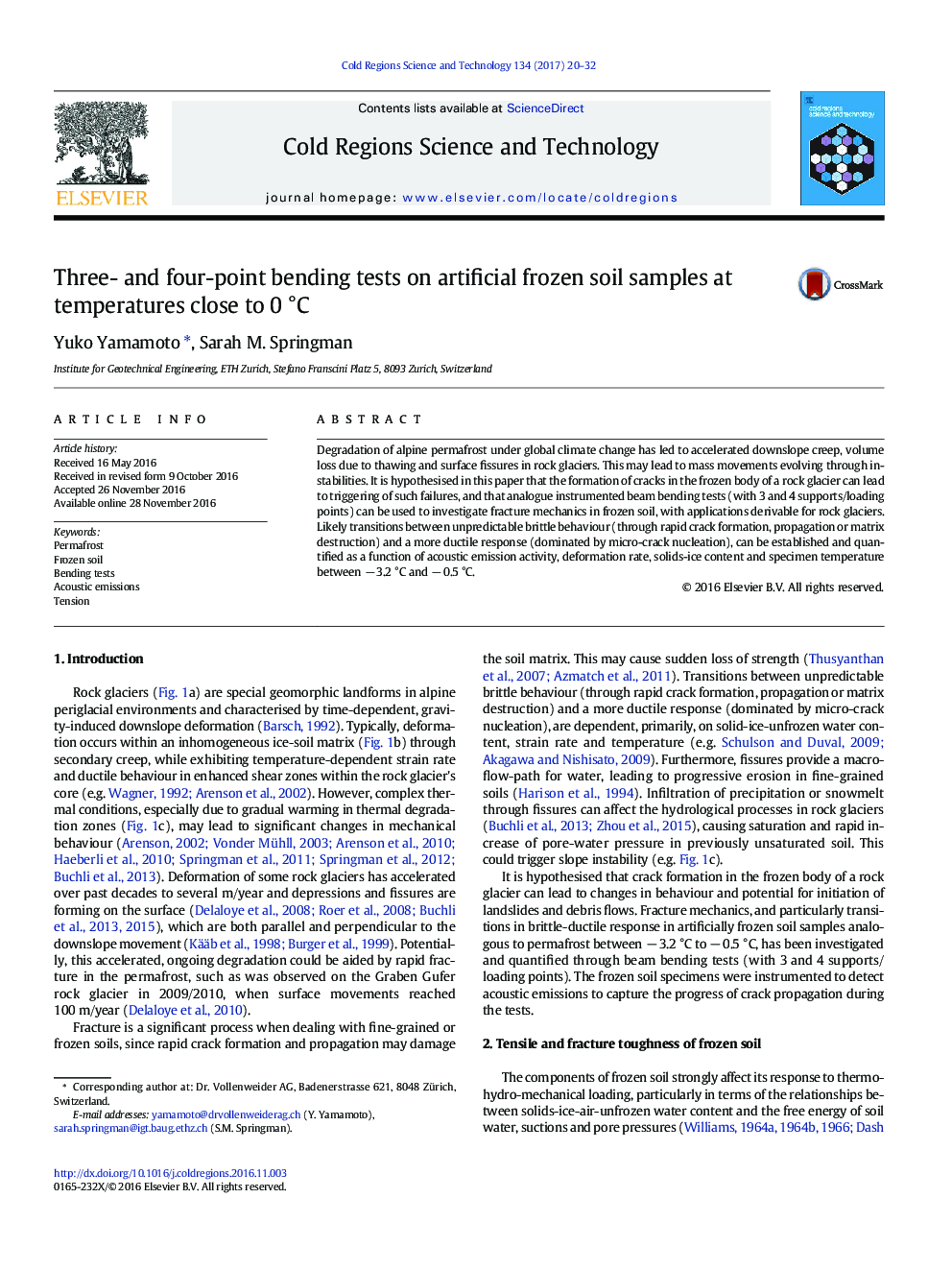| Article ID | Journal | Published Year | Pages | File Type |
|---|---|---|---|---|
| 5779456 | Cold Regions Science and Technology | 2017 | 13 Pages |
â¢Tension cracking events in permafrost modelled by beam bending tests at < 0 °Câ¢Fracture mechanics in frozen soil investigated through novel instrumentationâ¢Differentiating between sudden loss of strength and nucleation of micro cracksâ¢Transitions between ductile/brittle responses identified for volumetric ice content wi, strain rates and temperature T
Degradation of alpine permafrost under global climate change has led to accelerated downslope creep, volume loss due to thawing and surface fissures in rock glaciers. This may lead to mass movements evolving through instabilities. It is hypothesised in this paper that the formation of cracks in the frozen body of a rock glacier can lead to triggering of such failures, and that analogue instrumented beam bending tests (with 3 and 4 supports/loading points) can be used to investigate fracture mechanics in frozen soil, with applications derivable for rock glaciers. Likely transitions between unpredictable brittle behaviour (through rapid crack formation, propagation or matrix destruction) and a more ductile response (dominated by micro-crack nucleation), can be established and quantified as a function of acoustic emission activity, deformation rate, solids-ice content and specimen temperature between â 3.2 °C and â 0.5 °C.
